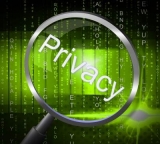
Australian consumers are concerned about security and privacy with the growing use of Augmented Reality-enhanced Internet of Things devices, according to new research which shows that consumers and IT professionals alike have concerns about the possible risks they face from these devices.
The research, from global business technology and cyber security association ISACA, shows that ownership of Internet of Things (IoT) devices in Australia is forecast to grow this year, with smart TVs expected to grow as much as 29%. But while consumers see Augmented Reality benefits, confidence dives in relation to security with AR.
According to the research, 70% of Australian consumers are concerned that IoT devices enhanced with AR may make their devices more vulnerable to a privacy breach.
In fact, over half (55%) of Australian consumers believe that their workplace is vulnerable to so-called virtual graffiti attacks, through which buildings, landmarks, signage and other surfaces can be virtually defaced.
{loadposition peter}Similarly, among IT and cybersecurity professionals, security concerns are among the top barriers to adoption of AR, and only 6% of Australian businesses have a programme in place to monitor negative comments on virtual graffiti apps.
According to ISACA, ownership of Internet of Things (IoT) devices in Australia is forecast to grow this year, with smart TVs expected to grow as much as 29%.
The research shows that smart TVs and smart watches are forecast to be the biggest purchases, with Aussie consumers likely to increase their spending on smart watches by 20% and wireless fitness trackers by 15%.
ISACA says Wi-Fi-enabled cameras, Internet-connected home alarm systems and connected cars will see less of an increase, as many Australians already own these devices, while Internet-connected baby monitors, children’s toys and medical devices are among the least likely to be purchased.
Currently, nearly one-fourth (23%) of the Australian population does not own any IoT devices.
ISACA’s annual IT Risk/Reward Barometer polls thousands of consumers and IT professionals worldwide to uncover attitudes and behaviours about essential technologies and information, and the trade-offs everyday consumers and businesses are making in gauging risk and reward.
The study also focused on IoT devices enhanced with AR in the US, UK, Australia, India and Singapore, following the Pokémon Go phenomenon.
Despite concerns about security, Australian consumers are positive about the benefits of AR, with a high number agreeing that a range of suggested AR applications would improve their lives or make it easier for them to do their jobs.
The applications that ranked the highest included training guides (70%), healthcare (67%) and retail geolocation (64%), and home decoration (60%).
Gaming and holographic Web chats were seen by Australian consumers as the least likely to improve their everyday life.
ISACA says that, according to Goldman Sachs, AR and virtual reality have the potential to become the next big computing platform. The firm’s conservative estimate is that the hardware and software market will grow to US$80 billion by 2025.
“With the proliferation of IoT-enabled devices and the drive to provide enhanced user experiences, IoT and AR have the power to become a source of unprecedented value and opportunity, as well as significant risk,” said Rob Clyde, an ISACA board director.
“Individuals and enterprises should focus on rapidly getting up to speed on these technologies while learning how to manage risk so they do not compromise their company’s ability to innovate.”